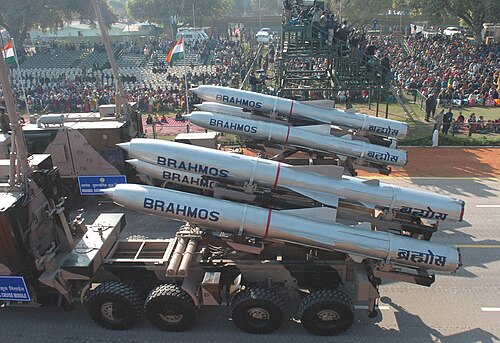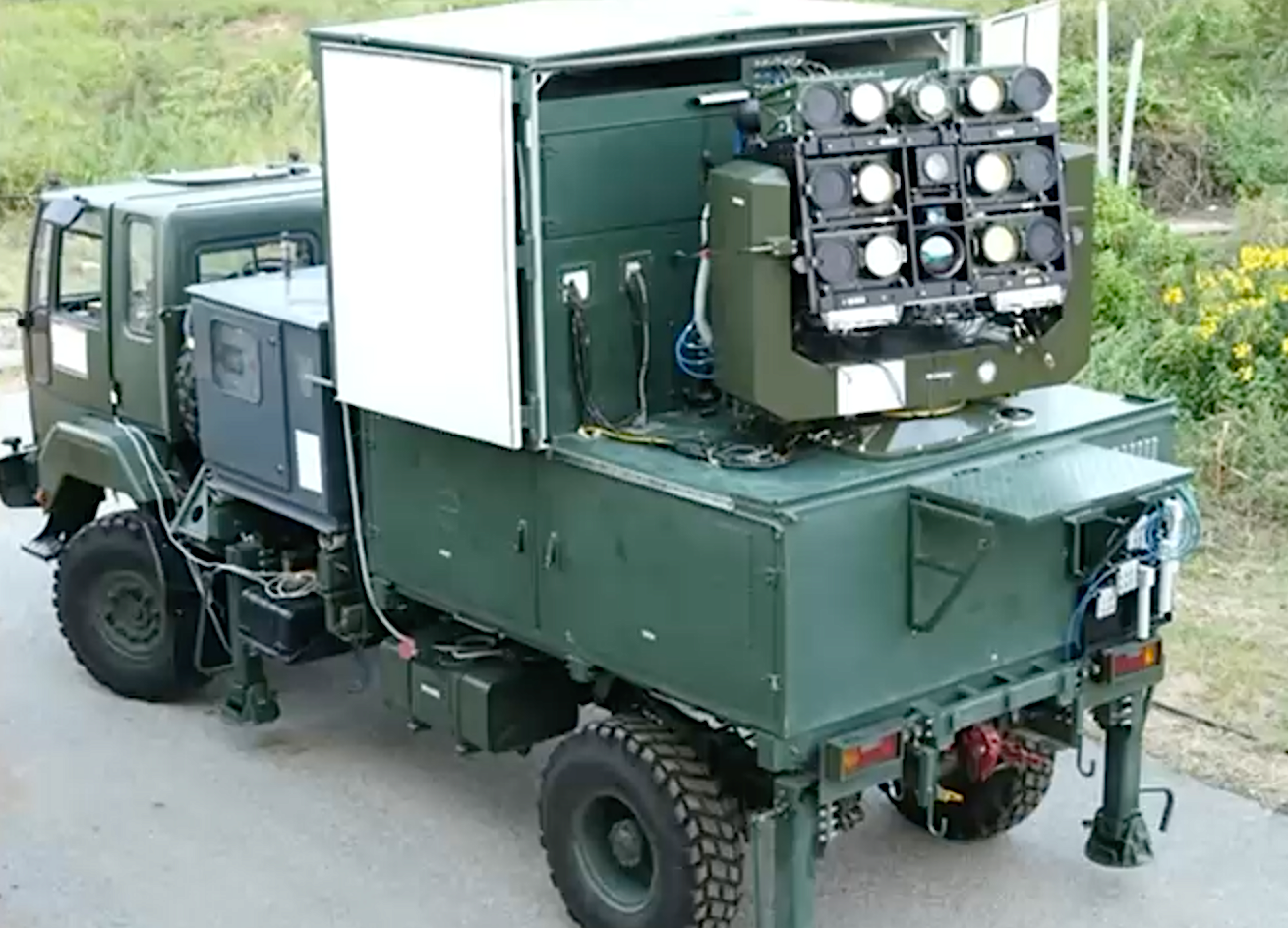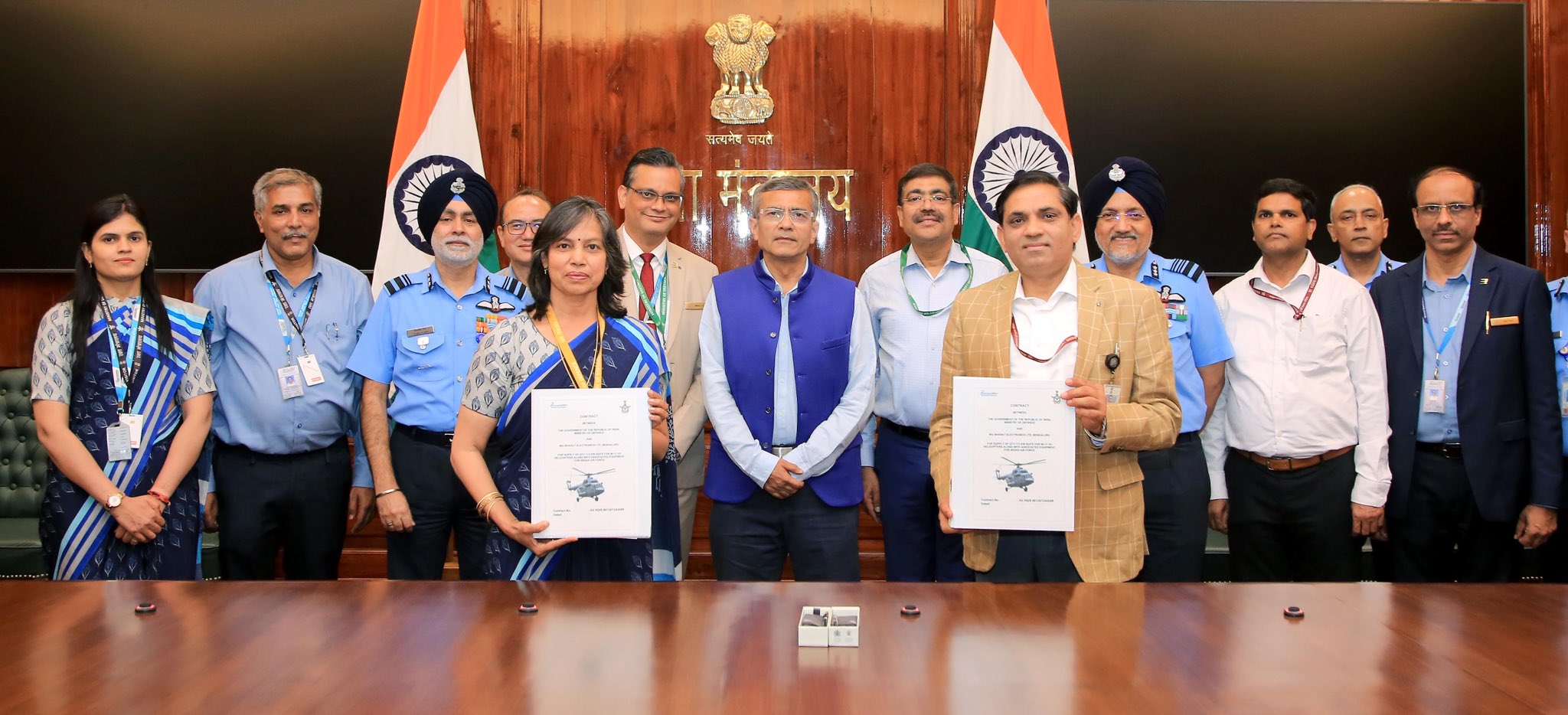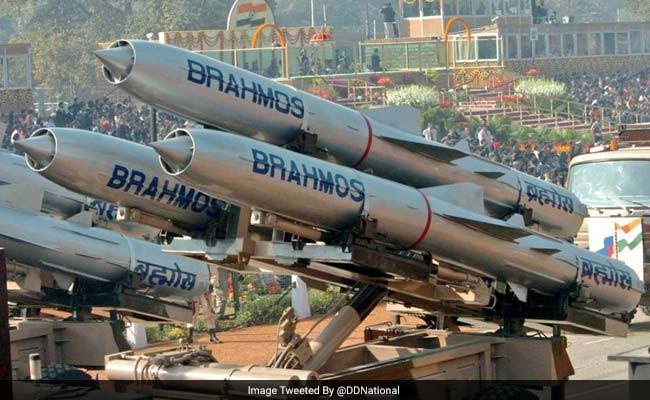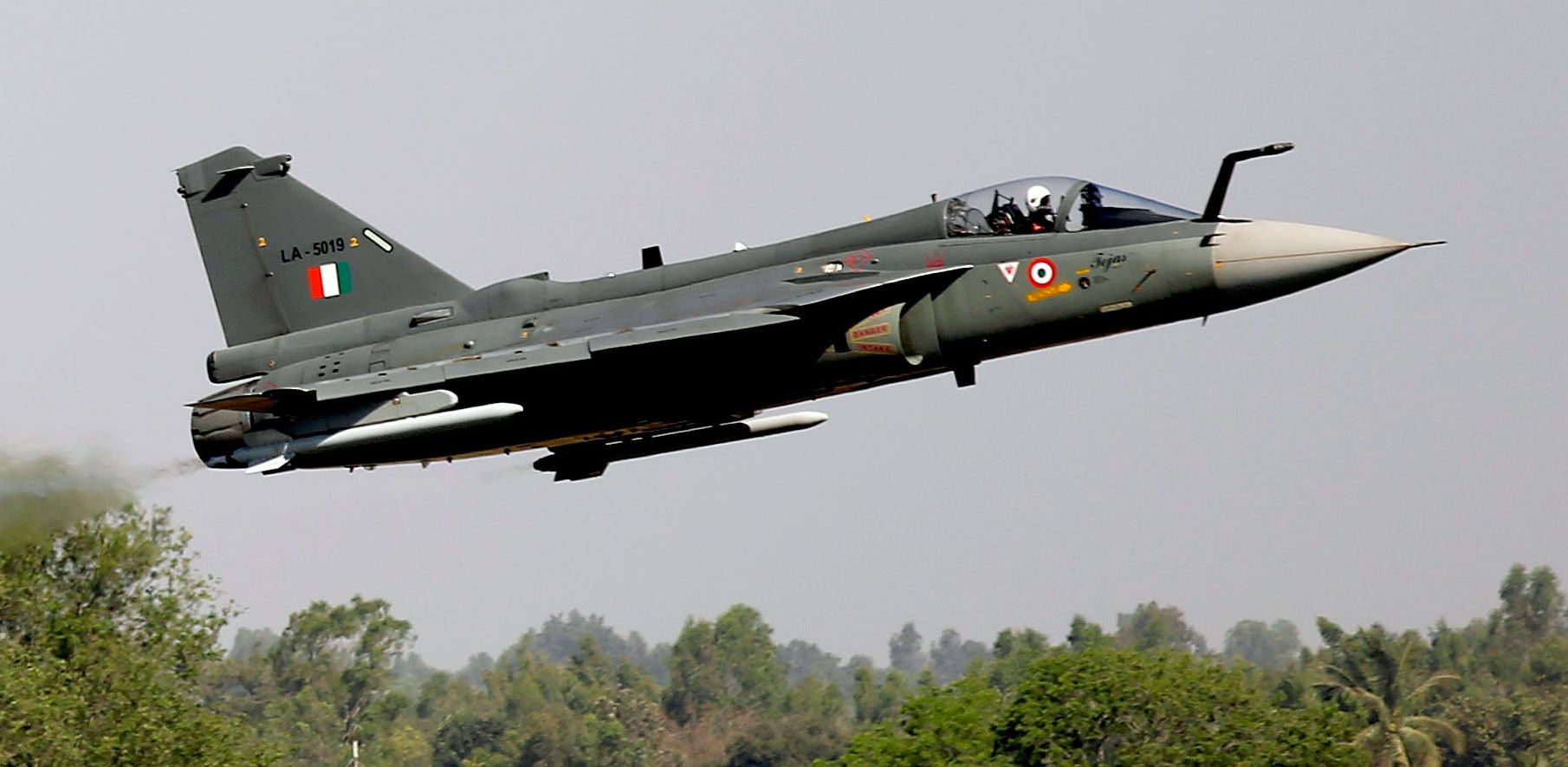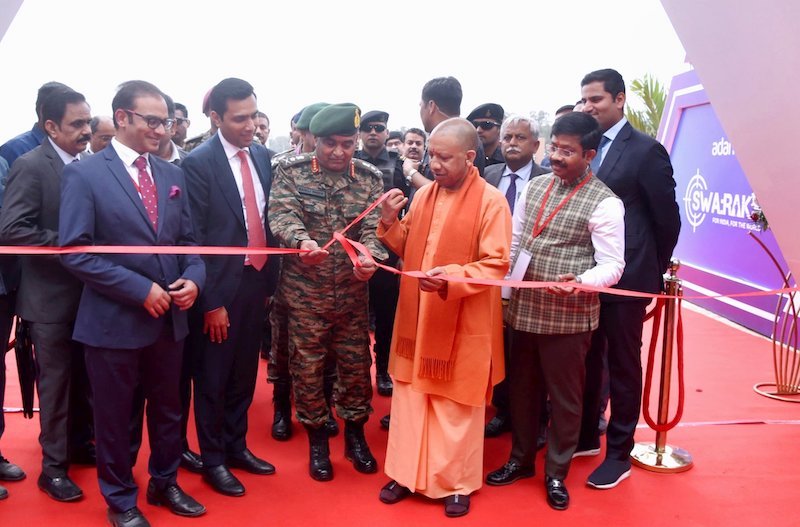 UP CM Yogi Adityanath, inaugurating the Adani Defence and Aerospace facility at the Kanpur Ammunition and Missile Complex. Also seen in this photo are COAS Gen Manoj Pande and Adani Group officials. (Photo via Twitter)
UP CM Yogi Adityanath, inaugurating the Adani Defence and Aerospace facility at the Kanpur Ammunition and Missile Complex. Also seen in this photo are COAS Gen Manoj Pande and Adani Group officials. (Photo via Twitter)
Kanpur: Marking a significant step towards self-reliance in defence manufacturing, Adani Defence & Aerospace has inaugurated South Asia’s largest ammunition and missile complex in Kanpur, Uttar Pradesh. Spread over 500 acres, the complex is touted to be a game changer, boosting the nation’s defence capabilities and technological advancements.
The complex boasts state-of-the-art automation, incorporating artificial intelligence and data analytics for enhanced quality, safety, and reliability.
This “Industry 4.0” facility is not only the first of its kind in the Indian private sector but also adheres to the highest safety standards, being a PESO-certified complex equipped to handle explosives for missiles and precision-guided munitions.
The complex has already begun production with an initial focus on small calibre ammunition, aiming to deliver 150 million rounds annually, an estimated 25 per cent of India’s yearly requirement. This marks a significant step towards reducing India’s dependence on foreign ammunition suppliers.
The project is expected to generate around 4,000 direct jobs and create a multiplier effect on local businesses, fostering economic growth in the region.
This inauguration marks a pivotal moment for India's defence sector, signifying its growing self-sufficiency and technological prowess in the crucial field of national security.
Army chief addresses gathering at complex
On Monday, the chief of the Army staff, General Manoj Pande, addressed a gathering of government functionaries, industry leaders, and other dignitaries at the Kanpur Ammunition and Missile Complex.
During his address, Gen Pande mentioned that multiple initiatives by the government and the Indian Army have provided an enabling environment in terms of policy provisions, licensing norms, the establishment of defence industrial corridors, and hand-holding in terms of trials and testing. These initiatives have significantly boosted the defence manufacturing ecosystem and resulted in major contracts being awarded to the Indian defence industry.
General Manoj Pande #COAS visited Ammunition & Missile Complex #Kanpur & addressed the gathering of Govt Functionaries, Industry Leaders & dignitaries. #COAS highlighted multiple initiatives by Govt & #IndianArmy to provide an enabling environment in terms of policy provisions,… pic.twitter.com/gtQ9qEUnku
— ADG PI - INDIAN ARMY (@adgpi) February 26, 2024
He underscored that initiatives to transform the Indian Army into an atmanirbhar (self-reliant) and future-ready force regarding the acquisition of new weapon platforms, equipment, and systems are necessary. The need is to be able to indigenously source or produce all that is necessary to fight, i.e., the ammunition, spares, and other maintenance requirements.
“Strategic prudence dictates that indigenous capacities in ammunition production are a crucial factor in maintaining operational readiness and tempo during conflict,” he said.
He mentioned that the Indian Army has a large ammunition inventory comprising 175 variants of different calibres and types. These range from ammunition for vintage platforms to advanced precision-guided munitions. Out of these, 134 ammunition variants have already been indigenized through the efforts of DRDO (Defence Research and Development Organization), DPSUs (defence public sector units), and private industry. However, due to production constraints, capacities, and large requirements for both operational and training needs, there exists a demand versus supply gap, which needs to be met through a diverse indigenous vendor base of private industry.
He acknowledged that the manufacturing of ammunition is a high-tech, high-cost venture and mandates significant investment in research and development, infrastructure, testing, and evaluation facilities, to ensure that stringent standards of safety and performance are met. “The production and manufacture of ammunition of the desired specification and its sustenance throughout its lifespan is a complex process, requiring advanced manufacturing techniques and quality control checks at each stage. This includes checks concerning raw materials, process testing, lot testing, sampling, and traceability protocols, to mitigate the risk of defects,” he said.
He also mentioned that most of the ammunition categories proposed for manufacturing by the Indian Army also have sufficient export potential. “With the evolving global security environment, the demand for ammunition is expected to grow manyfold. Considering the limited players in the field worldwide, with expertise in ammunition manufacturing, and our competitive manufacturing cost, the Indian industry will have a huge advantage. The export potential, according to one estimate, is approximately ₹16,000 crore. Therefore, to emerge as a global hub for niche technology and innovation in the field of ammunition, it is imperative to maintain the desired quality and global standards,” he said.
He noted that the participation by the defence industry in ammunition manufacturing has been encouraged by multiple policy changes, including interactive RFP (requests for proposal) formulation in consultation with the industry, broad-banded technical specifications to encourage wider participation, and the offering of existing infrastructure and ammunition components for trials. He mentioned that the transformative initiative of the government has begun to show tangible results, and these state-of-the-art facilities for ammunition and missiles being witnessed today are testimony to the indigenous production and supply chain ecosystem that is taking shape.
He expressed his happiness by informing the gathering that more than 85 per cent of the Army’s ammunition is now being sourced indigenously. In addition, multiple cases are in advanced stages of fruition.
“To further promote this initiative, the Indian Army has carried out a holistic review for a time-bound indigenization plan of all ammunition currently imported, by onboarding private industry. Accordingly, a well-defined roadmap has been put in place based on the type of ammunition and existing capacities,” he said.
He also mentioned that 32 variants of ammunition in 12 categories were identified in Phase I for manufacture by the Indian industry.
“All cases are likely to come to fruition in the next year, as per the envisaged timelines. Approval has already been obtained for five additional ammunition categories to be developed in Phase II. Simultaneously, ‘MAKE’ programmes for developing new-generation ammunition, including the electronic fuzes currently not held in the inventory, are also being progressed,” he said.
He noted that the enthusiasm and intent displayed by our industry mean the residual import dependence shall be adequately addressed in the coming years. He underscored that, with India’s established expertise, competitive manufacturing cost, and increasing capacities in ammunition production, the nation and armed forces shall soon realise the vision of “Make in India, Make for the World” by becoming net exporters of ammunition.
He urged everyone to collectively contribute to the aspirations, goals, and objectives of a rising India, through the resolve and commitment to self-reliance.


